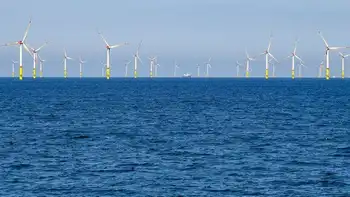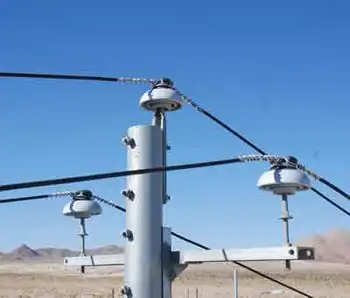DOE to fund carbon capture project in Wyoming
By Associated Press
Substation Relay Protection Training
Our customized live online or in‑person group training can be delivered to your staff at your location.

- Live Online
- 12 hours Instructor-led
- Group Training Available
The Big Sky Regional Carbon Sequestration Partnership hopes to start work within a year to develop the project, which will study the injection of carbon dioxide underground on a commercial scale.
The Energy Department, which is funding seven such large-scale projects around the country, says successful carbon sequestration would help the United States use its fossil fuel resources without releasing pollutants thought to contribute to climate change.
"Along with our regional partners, we will be able to move carbon sequestration technology from the laboratory to large-scale field demonstrations and ultimately to the marketplace," said Jeffrey Kupfer, deputy secretary of energy. "By doing so, we will help our nation meet growing energy demand and reduce greenhouse gas emissions."
The Big Sky partnership, which is led by Montana State University, is one of seven regional partnerships made up of federal agencies, universities, national laboratories and industry interests.
The remainder of the project's $130 million cost will be covered by private partners and other matching sources, said Lee Spangler, director of the Big Sky partnership. The main private partners are Houston-based Schlumberger and Denver-based Cimarex Energy Co., Spangler said.
The eight-year project involves drilling a CO2 injection well into the Nugget Sandstone formation, about 11,000 feet underground. Similar sandstone formations are found throughout the region and potentially could store more than 100 years of CO2 emissions, according to the Energy Department.
Cimarex will provide liquefied CO2 for the project from its Riley Ridge plant, a proposed gas- and helium-processing facility slated to be built at the base of the Wyoming Range, near Big Piney in Sublette County. Big Sky's injection well is proposed for the same area.
Scott Stinson, Cimarex's Riley Ridge project manager, said that while the Big Sky project is dependent on the Riley Ridge plant to provide CO2, the two projects are subject to separate environmental studies and permitting by regulators.
The Cimarex development also includes carbon sequestration, but the two projects are different. Cimarex plans to sequester the gas back into the zone where it came from, while the Big Sky project would inject CO2 into an area containing saline water that doesn't currently have CO2, Stinson said.
"Our project is moving forward because most of our environmental issues have already all been addressed," Stinson said. "We'll let the DOE address the new environmental issues that are specific to their project."
Spangler said the Nugget Sandstone is appropriate for the test project because it's comparable to other regional formations, has a large storage capacity and is sealed by five layers of caprock. The water inside the formation has salt levels that make it unusable for drinking water, he said.
"It's definitely not a drinking water source and therefore (the project) has no drinking water impact," he said.
Rob Hurless, energy adviser to Wyoming Gov. Dave Freudenthal, said the University of Wyoming participated in earlier stages of the Big Sky partnership's development of the sequestration project. More recently, the university turned its focus to a separate congressionally funded project involving a different private company, Hurless said.
Wyoming, the nation's largest producer of coal, has actively promoted carbon sequestration as a means of sustaining markets for its coal. The Wyoming Legislature this year passed two laws establishing underground storage rights and a framework for state regulation of carbon storage.
"At the end of the day, our interest is understanding and creating the environment so we can get C02 in the ground," Hurless said. "Anything that does that, where we can learn from it, we're very interested in."











